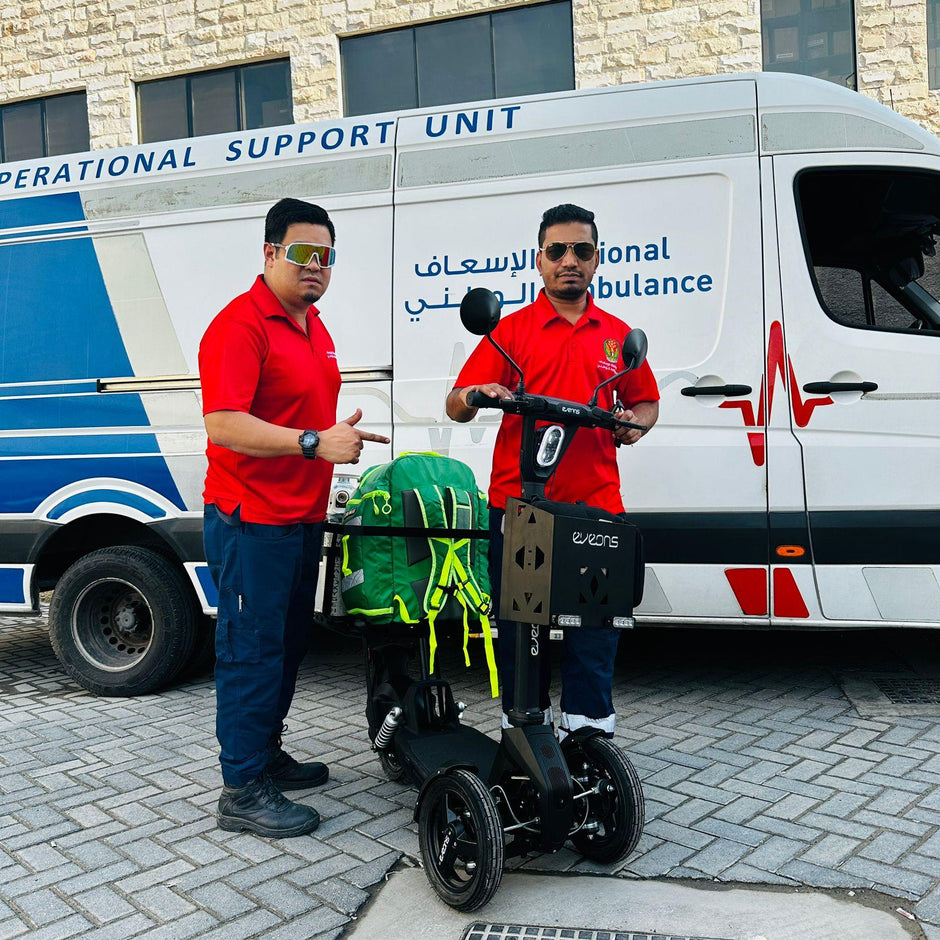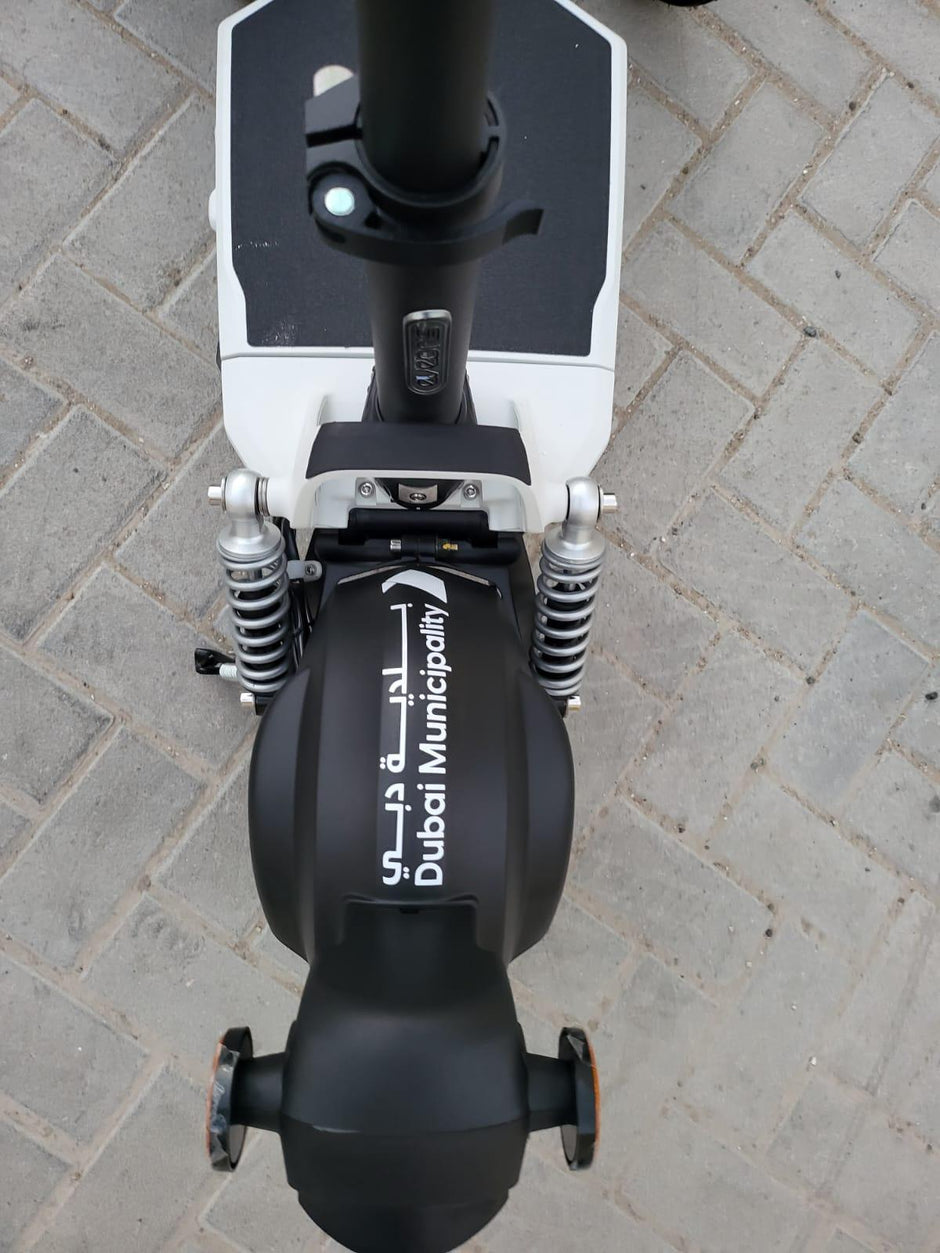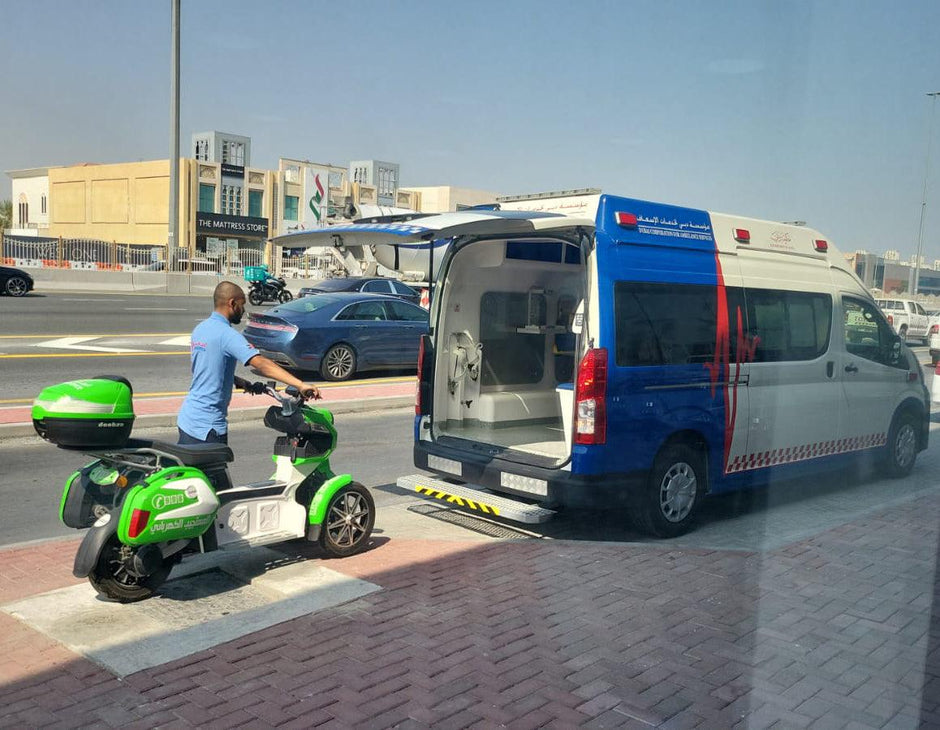C40 is gathering the mayors of almost a hundred major cities worldwide in a Climate Leadership Group to take urgent actions to confront the climate crisis. I have been following this organization for a long time and wanted to cover it in this series since the beginning, because I believe that a city is the right level of settlement to engage transformations in the way we live. In addition to that, a couple of years ago, C40 launched a competition called “Reinventing Cities” to promote zero-carbon urban developments. I have investigated all the awarded projects and found very interesting solutions impacting our future of mobility. Here, I will explain why I believe sustainable projects in cities are so important to help us implement innovative solutions and I will present my review of this competition with a mobility standpoint.
1. We need cities to encourage us to change
Allow me to digress a bit from our main topic with a clear intention — to tell you the truth! -— to come back even stronger with my main point.
Biologists have discovered that flock of birds and school of fish are obeying the same basic and simple rules:
- Firstly, each member acts out of simple self-interest: he is joining a flock (for a bird) or a school (for a fish) because he learned by experience that it is safer to travel in a group than alone; every time a predator approaches, he will move towards the middle of the group, which is the safest place, regardless of what could happen to the other individuals. In fact, it is the younger and less experienced member, who don’t know this survival tactic, who will likely be caught by predators.
- Secondly, each member will coordinate his behavior with the immediate neighbors around him. He cannot apprehend the full size of the flock/school; he can only figure out the few individuals around him, so he will adapt his behavior to them. It is funny to learn that there are members that are more influential than others, therefore the individuals around him will be particularly impacted and will adjust their movements to these influencers (same speed, same direction, and keep distance to avoid collision).
These flock/school organizations are temporary, there is no leader and no sophisticated communication tools. They only rely on self-interest and on the imitation by most of the members of a few surrounding influencers. With these simple rules, birds and fishes have developed a selfish protective system, which appears highly complex when you look at it from the outside with its magic choreography and the speed of reactiveness, but it is quite simple.
Let me bring another digression coming from earlier research on artificial life. Seventy years ago, a mathematician J. H. Conway invented a system called the “Game of Life” which is based on a rectangular network of cells.
There is no player, and the game expands by itself. Each cell acts on its own, and it follows the behavior of the neighboring cells. In this game, each cell has 8 neighbors — you know what? ornithologists say that birds in a flock used to interact with only 7 members around them, leading to the same number!
Conway defined the following basic rules: a cell has only two status, either living or dead; a live cell will remain in the same status only if two or three surrounding cells are alive; whilst a dead cell will become alive only if three surrounding cells are alive. All the other cells will be in dead status. That’s all! The game can start, and it will automatically generate highly sophisticated creations by itself, as you can see in the video below.
This artificial life of cells behaves like birds or fishes and can generate very complicated forms with simple basic rules.
Now what about us and the cities?
There is no doubt that our collective consciousness has dramatically evolved over the last few months. Now every person I meet is concerned about climate change and is willing to do something in their life to have a positive impact. This resolution is fine, but there is a huge step between our intention and our actions. Having a positive mindset will not be sufficient to shift to a new living scheme. I think that even if the whole population was ready to change, this would not happen yet, because we behave exactly like birds/fishes self-organized systems or cells in the “Game of Life”. The same two rules govern us!
- We will always privilege options to protect ourselves and our loved ones. Our personal interest will remain our priority in all circumstances, and it might be even more relevant in a crisis period. So, if there is a minimum risk by applying our environmental resolution (for instance, taking public transport in pandemic time...), we will not make it.
- We will always look around us and check what our family, friends, neighbors, or influencers are saying or doing, and we will take their feedback into serious consideration. We can make drastic decisions for a while, but if it is not rewarded or largely embraced in the long run by the other persons in our community, it will be difficult to sustain it for a long time. If the individuals around us are not adapting their behavior to climate crisis, we will not change ours either, even if we have the mindset to do it.
We behave like birds and fishes in a collective group or cells in an artificial life, sharing behaviors whilst protecting ourselves. There is nothing wrong here, it is just the “Game of Life”.
In these circumstances, we need a push from outside that will impact us unconditionally, so there will be no discussion about our own interest and the adoption by our neighborhood. This is where such a push can come from a city! I see new sustainable regulations by municipalities as an accelerator to force us to implement sustainable mobility solutions. If the cities can take appropriate and fair measures for all their citizens, the shift to alternative transports could be quite strong and impressive.
2. C40 Group of cities is encouraging us to change
The C40 Climate Leadership Group has been founded in 2005. At the time, there were only 40 cities joining this organization, hence the initial name. It is a bit confusing because the same name has been kept since then, although they now have nearly a hundred cities in the world and more should join in the future. This is a fantastic organization, and this should help to accelerate the implementation of common solutions to address climate change.
I like their intention to share best practices and emulation between members. In this purpose, they have established a very interesting competition between the cities to stimulate innovative projects. 2022 will be the third edition of this initiative. It is called “Reinventing Cities” with the intention to renovate under-utilized sites in a decarbonized, sustainable, and resilient urban new development. Multi-disciplinary teams — including architects, planners, developers, investors, environmentalists, creative project holders, start-ups, academics, and community associations — join efforts to make a common carbon free project proposal. Ten objectives have been defined to evaluate each proposal. I have summarized them in the chart below.
There are several objectives related to sustainability for buildings and management of facilities. One of them (#3) is particularly interesting for us as it relates to mobility.
I have reviewed the 51 projects that have won the competition so far. They are coming from 27 different cities, and the main ones (those with more than one project) are Milano, Madrid, Reykjavik, Montreal, Paris, Chicago, Oslo and Auckland. Their proposals towards sustainable mobility are quite interesting and provide a good perspective of future trends in this domain.
In many of these projects, they are promoting pedestrians and cycling. It is not a big surprise and rather expected, so I will not refer to it in the subsequent examples.
In several cases, the plan is to implement the concept of a "15-minutes city", an urban organization to offer all services accessible within a 15-minute radius from where you live. The intention is to maximize sustainable mobility, develop green areas, improve community spirit... The best examples are the Tuscolana Campus in Roma, the Crescenzago in Milano which is promoted as a new way of “collaborative living”, and the transformation of the Westwood/Highland Park area in Seattle.
In Melbourne, they took the Eastfield shopping center area as a pilot site to test the 20-minute neighborhood principle. Today, this place is predominantly car-based with single use low-scale commercial development, dominated by impermeable surfaces including a large car park and an inaccessible stormwater drain along Tarralla Creek. Nothing nice! The project will completely transform the site with the objective of enabling residents to meet all their everyday needs within the shortest possible distance. This will save time, unnecessary trips by car and carbon emissions.
Other cities like Oslo, Roma or Madrid are promoting car free zones. Even Dubai, which is well-known for being a car friendly city, will implement a dedicated sustainable transportation zone at Al Karama, one of the older neighborhoods of the town.
The management of parking spaces is a very interesting problem, which appears in several projects: one of the more drastic proposals is the Chicago Downtown Loop Site, a carbon-neutral building, without underground parking to force residents to adopt sustainable mobility solutions. There will be only bike parking and charging stations for e-bikes. Another aggressive case is the Greco Breda residential site in Milano where the number of car parking spaces will be significantly reduced to only 100 spaces for 700 tenants. At the Kelsey Civic Center in San Francisco, a future community with 102 homes, there will be no parking for fossil fuel vehicles, only electric vehicles charging stations and partnerships with local car-sharing organizations. There will be no private vehicle parking for the eco-rehabilitation of Canal de l’Ourq in Bobigny (France). In Reykjavik, the Artún project will have no underground parking, and 50% of available parking spaces will be dedicated to electric vehicles. At a lower scale, Buenos Aires will reinforce its parking ban on bus and taxi lanes.
All these initiatives on parking reduction have one main objective to increase green areas, reduce noise and pollution. This is obvious, but how are these cities going to promote new mobility habits to their inhabitants? It is interesting to see the way they associate these measures with alternative sustainable mobility solutions.

In Oslo (Bygata Furuset) they will develop and densify the public transport. In Reykjavik, they will implement a huge public transportation project across the city to promote eco-friendly travel habits. In Milan, they will develop two additional solutions to incentivize the inhabitants: first, at Nodo Bovisa, a multimodal hub will be created, and second, at Crescenzago, they will launch a mobile application with gaming features to encourage and reward people to use alternative transports. In Washington D.C. (the New York Avenue NE Corridor), they will focus on safety in public transport and walking streets.
In fact, security is another interesting topic. The motivation for some projects is to solve an existing concern with insecure locations, where the only way to move around safely is to use a car. In order to develop low carbon mobility, the first step must be an obligation to make each of these locations safe. This is the scenario for the Austurberg community in Reykjavik, the Gran San Blas neighborhood in Madrid or the Plaza de Mercado 7 de Agosto in Bogota.
There are three projects with the objective to transform crowed intersections with massive traffic into places dedicated to low emission mobility, greeneries and walking areas: one roundabout in Milan (Piazzale Loreto) and two crossroads in Paris (Porte de Montreuil and Porte d’Orléans). The urban mobility specialist Mikael Colville-Andersen is calling these places "the Arrogance of Space". He refers to the locations where there is an unequal distribution of public space, where pedestrians and cyclists are penalized to the single benefit of vehicles. This is a fair description of these places today, so the plan is to completely redesign with top priority on people and a huge reduction in vehicle flow (traffic will be reduced by half in Milan’s case).
In some projects, there is a visible synergy between the different objectives of C40. For instance, in Auckland, at the Northcote Town Centre, they want to reduce the traffic and pollution, caused mainly by garbage trucks, by changing the waste management process and develop an underground pneumatic tube network to transfer garbage to centralized collection points. Thanks to that, there will be no more congestion and the site will restore natural elements with tree-lined laneways, a community garden, and a waterway corridor
Another very interesting project is the transformation of the center of Dakar through the decrease in parking lots, and addition of open and green spaces. The public transportation will be assured by electric buses and the energy will come from roofs photovoltaic systems installed above all the public buildings. A nice combination of energy management and sustainable mobility.

The principle of the C40 competition is to renovate an abandoned site. By consequence, most of these projects are focused on a specific area, some of them being quite small (less than 1 hectare). For the mobility dimension, this is the limit of the exercise, and I think it can explain why the majority of the solutions are concentrated on walking and cycling paths. There are some projects where we don’t even know the broader impact on mobility. For instance, a Logistic Group proposed a cross-docking station in a sustainable park, and an urbanist developed a refurbishment plan and redesign for an old building, but we don’t know what the impact of these projects on the mobility outside of their location will be.
I will take another example: Paris region. Four of the winning projects are located very close to the capital and they are quite impressive. However, outside of the C40 competition, forty kilometers east of Paris, there is a massive development of a brand-new community around Disneyland Park, with an urban planning purely designed for privately-owned vehicles, with large four-lane avenues, huge parking lots, just a few electric charges places, and limited public transport. On top of the amusement park, the main entertainments are a gigantic mall and an American-type outlet village attracting customers from everywhere and generating regular traffic jams. It seems like we are going in opposite directions: renovating old places with carbon neutral ambitions and building new places with no carbon ambition. From one side, we limit car usage, converting roads in green spaces, and from the other side, we make car usage mandatory, converting agricultural lands in roads, with the risk to confuse the overall mobility plan for the region.
This contradiction illustrates the fact that we are still privileging our individualist behaviors (first rule). I like very much these C40 projects which are appealing and stimulating, but it is clearly not yet influential enough to move us to the second rule and collectively adopt the same sustainable solutions. We are not there yet where imitating our neighbors will be a way to protect ourselves and save the environment. So, we need to dramatically expand initiatives like the “Reinventing Cities” competition to new developments as well (not only underutilized existing sites). Thanks to this, we might reach the point of sharing the same collective mentality as a flock of birds.
Just before wrapping up this article, I had a dinner with a friend who devotes his leisure time to walk in the countryside listening to birds singing and chirping. I used to walk with him, but I never became as much of an expert as he is. The only melody that I can recognize is the one of a blackbird. I spent my childhood in a house close to an enormous spruce. Every year, for several months in summertime, a blackbird was perched at the very top of the tree and chirped for several hours before sunset. He became part of my life, and I would wait to hear him every time I sat in the backyard. Sadly, one day he vanished and never came back. Fortunately, I kept his song printed in my mind, and now I enjoy every moment when I hear a blackbird singing anywhere. The point of this story is that during the dinner, my friend explained that the organization of flocks is not quite as I pretended it to be.
He explained that there are different kind of organizations, and two major ones: the cluster mode, the one that I have referred to, which is common for starlings, shorebirds, robins, pigeons, or blackbirds (my favorite one!), and the V-form mode, for pelicans, geese, ibises, storks, or waterfowl, where the birds are symmetrically aligned behind a header. Nonetheless, the structure may be different, but the rules remain the same: each member travels for themselves, following a few neighbors and there is no designated leader.
All of this
reminded me that I should better take my eyes off my smartphone and look up at the sky to admire the magnificent flock of birds!








